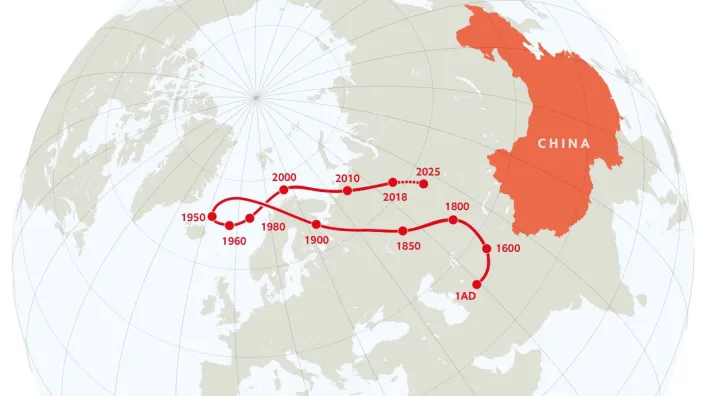
Danny Quah, a professor at the London School of Economics (LSE), studied the dynamics of the global economy’s centre of gravity in a 2011 paper. He defined the economic centre of gravity as the average location of the planet’s economic activity, measured by GDP generated across nearly 700 identifiable locations on Earth’s surface.
In 1980, the world’s economic centre of gravity was situated in the middle of the Atlantic Ocean. However, by 2008, it had drifted eastward to a location between Izmir and Minsk, east of Helsinki and Bucharest. Extrapolating growth in the 700 locations, Quah projected that by 2050, the economic centre of gravity would be located between India and China.
An updated graphic shows the WECG’s movement over time. In 1AD, China and India were the world’s largest economies. European industrialization and America’s rise drew the economic centre of gravity into the Atlantic. However, Japan’s economic boom made it the second-largest economy in the world, pulling the centre northward. As China has regained economic leadership, the centre is now retracing its steps towards the east.
Interestingly, the WECG appears to move horizontally, suggesting that the north-south divide may remain relatively constant. Quah’s research shows that the latitude declines from 66 degrees North to 44 degrees North by 2049, implying that the south, like the east, is gaining considerable relative economic strength.
As the global economy’s centre of gravity continues to shift eastward, policy formulation and global governance will require more inclusive engagement with the east. While some global policy questions, such as promoting economic growth, may remain the same, others, like appropriate political and military intervention, might change in character.
Can you afford not to be present in China? Talk to us, we help you to be successful in China.